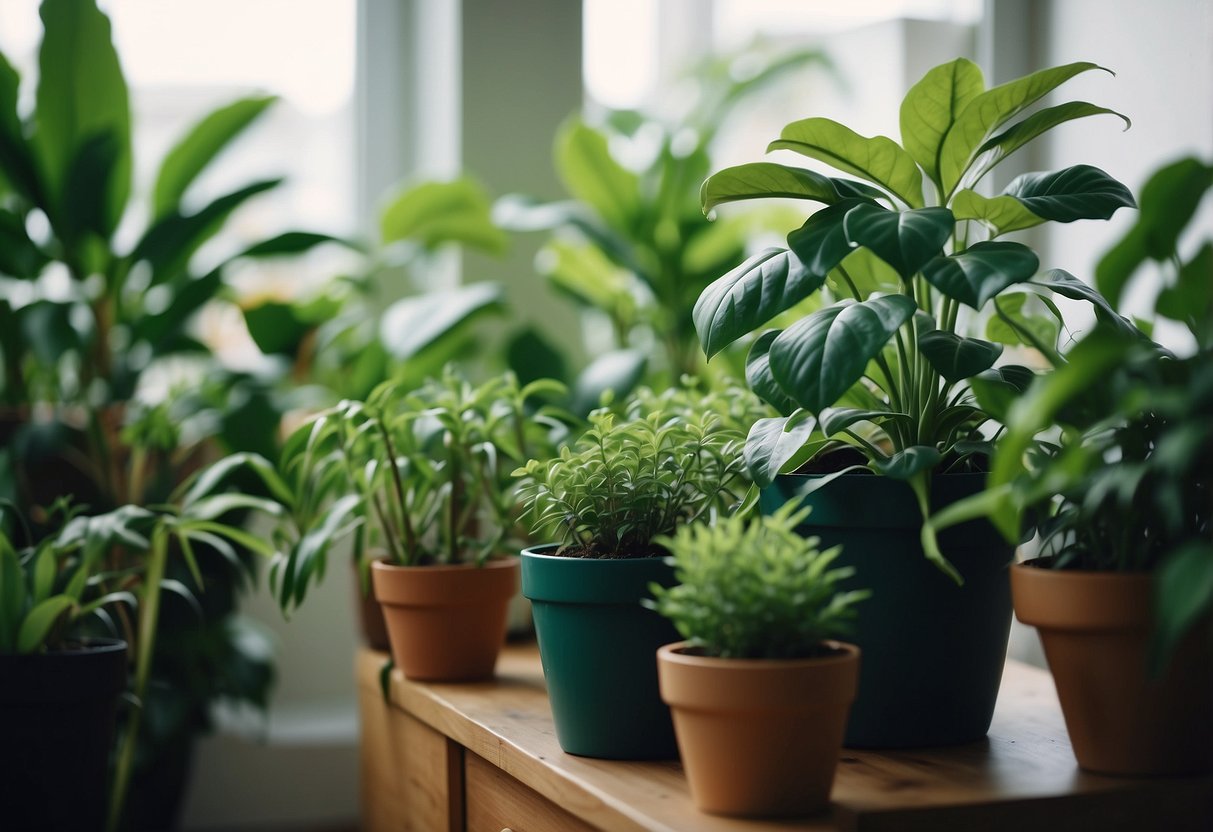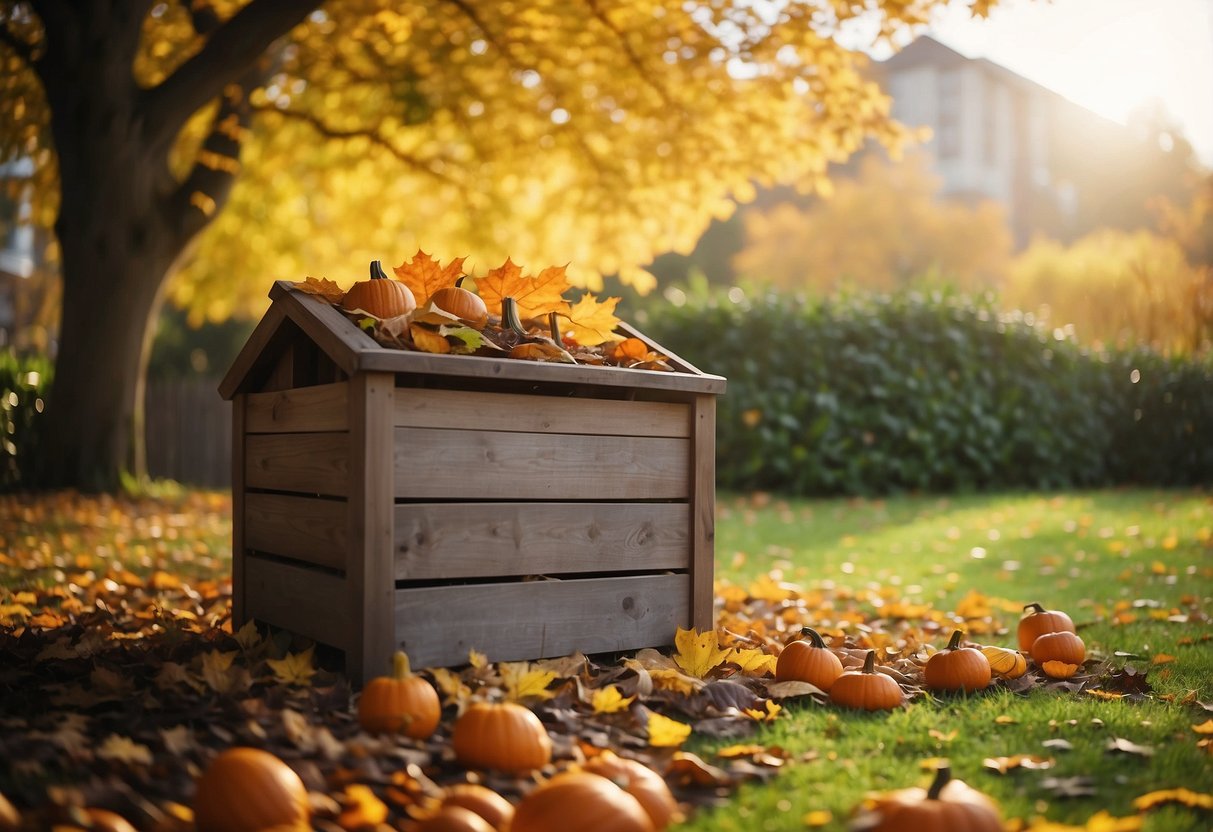October Garden Ideas: Boost Your Autumn Bloom
As the weather cools and the days grow shorter, October is the perfect time to give your garden some extra attention. This month offers a unique mix of tasks to prepare for the coming cold, while still enjoying the stunning colors and last harvests of fall.

You might wonder, what can you do to keep your garden thriving in October? Whether you’re looking to plant fall vegetables or tidy up your shrubs, there’s plenty to keep you busy as you transition your garden from summer to winter. With a bit of planning, you can make the most of this beautiful season and set your garden up for success in the months ahead.
1) Plant Cool-Season Veggies

October is a great time to plant cool-season vegetables. These veggies thrive in the chilly weather and shorter days of fall.
You might want to try planting broccoli and kale. Both are hardy and can withstand frosty nights.
Radishes and carrots are also quick to grow and can be harvested before the first heavy freeze.
For leafy greens, consider spinach and lettuce. They grow well in cooler temperatures and are perfect for fresh fall salads.
2) Add Fall Flowers

Adding fall flowers to your garden can make it stunning in October. Marigolds bring bright orange and yellow colors. These hardy blooms last until the first frost. Deadheading marigolds helps produce more flowers.
Garden mums are another great choice. They come in red, yellow, purple, orange, and white.
Consider planting sedum. This succulent is low-maintenance and attracts butterflies. Its pale pink flowers bloom in dense clusters.
Camellias can add elegance with their rose-like flowers. These shrubs are perfect for warmer climates.
Planting fall flowers can add beauty and variety to your garden.
3) Mulch Your Garden Beds

Mulching your garden beds in October helps protect your plants as the weather gets colder. Use organic mulch like shredded bark or compost to nurture the soil.
Apply a 3-inch layer of mulch to keep moisture in and prevent weeds. It also helps insulate the plant roots from extreme temperatures.
Adding mulch now will save time on weeding and watering later. Plus, it makes your garden look neat and tidy. For more ideas on mulching, check out these garden beds and mulch ideas.
Happy gardening!
4) Clean Up Fallen Leaves

Raking up fallen leaves is important in October. Leaves can smother your lawn and garden, blocking sunlight and air.
Composting leaves is a great way to use them. You can also mulch them to enrich your soil.
Leaving some leaves can help beneficial bugs and birds. They need a place to shelter over the winter.
5) Plant Spring Bulbs

October is a perfect time to plant spring bulbs. The weather is cool, and the soil is easy to work with. This helps the bulbs establish roots before winter.
Choose bulbs like tulips, daffodils, and crocuses. These flowers will provide a colorful display when spring arrives.
Make sure to plant the bulbs a few inches deep. Water them well after planting and add a layer of mulch to protect them during the colder months.
6) Bring Houseplants Indoors

As October cools down, it’s the perfect time to bring your houseplants inside. This protects them from the colder weather and keeps your home green.
Make sure to wipe down the leaves to remove dust and pests.
Place the plants near windows where they can still get plenty of indirect sunlight.
Check if any plant needs to be repotted before moving them indoors. Repotting helps them adjust better.
Consider adding LED grow lights if your home does not get enough natural light. These can help maintain their growth and health.
Use warm water for watering to keep roots cozy.
7) Build a Compost Bin

Building a compost bin is a great idea for your October garden. It’s a simple project that can help you recycle kitchen scraps and yard waste into rich, fertile compost.
You can make a bin using materials like wooden pallets, wire mesh, or plastic bins. For a small garden or apartment, a worm bin made from 5-gallon buckets can work well.
Make sure your compost bin is at least 3 feet wide, high, and deep for good airflow and to help it heat properly. With your own compost bin, you’ll have a constant supply of natural fertilizer for your garden.
8) Divide Perennials

October is a great time to divide perennials in your garden. By this month, many plants have finished blooming, and the cooler weather makes the process less stressful for the plants.
Start by digging up the entire clump of the plant you want to divide. Use a spade or garden fork to gently lift the clump out of the ground.
Once the plant is out, use your hands or a sharp knife to separate it into smaller sections. Each section should have a good amount of roots and at least one growing shoot.
Replant the divided sections in their new locations. Make sure to water them well to help them establish in their new spots.
Dividing perennials not only helps rejuvenate the plants but also spreads beauty throughout your garden. If you want tips on specific plants like daylilies, irises, and poppies, visit this guide.
9) Prune Shrubs and Trees

October is a great time to get your garden in shape. Many shrubs and trees benefit from a good prune.
For instance, Catalpa trees recover well when pruned in fall or winter.
Roses also thrive when pruned in October, as it helps them prepare for the next growing season.
Remember to avoid pruning shrubs that bloom in spring, like azalea and lilac, to keep their flowers intact.
Happy pruning!
10) Protect Sensitive Plants

Before the cold weather sets in, move your tender plants like citrus and succulents indoors. This will keep them safe from frost.
Consider using gallon water jugs or milk jugs as quick shelters by cutting off the bottoms. They act like mini-greenhouses and can help trap warmth around your plants.
It’s a good idea to drain your irrigation system and shut off the water for the season to avoid freezing pipes.
Preparing Your Garden for October

Getting your garden ready for October involves a few essential tasks that ensure it thrives as the weather cools. These tasks include clearing out summer plants, rejuvenating your soil, and adding mulch.
Cleaning Up Summer Debris
Begin by clearing out dead plants and weeds left over from the summer. This helps prevent diseases and pests from overwintering in your garden.
Remove old vegetable plants and flowers, especially those that show signs of disease or pest infestation. Pull out weeds and dispose of them properly to avoid spreading seeds. If you have a compost bin, consider adding healthy plant material to it.
Don’t forget to trim back perennials that have finished blooming. This makes your garden look tidier and prepares these plants for new growth in the spring. Also, collect fallen leaves, but avoid leaving them in thick layers on your plant beds, as they can cause mold and unwanted fungi.
Soil Preparation
Improving your soil in October is crucial for a healthy garden next year. First, test your soil to determine its pH and nutrient levels. Soil testing kits are available at garden centers and provide a good understanding of what your garden needs.
Next, add organic matter like compost or well-rotted manure to your soil. This enriches the soil with necessary nutrients and improves its texture. Till the organic matter into the soil if possible, breaking up any large clumps and aerating it well.
Consider adding a layer of new topsoil if your garden soil is overly compacted or eroded. This helps to create a better growing environment for your plants. Remember to avoid over-fertilizing, as it can harm both the soil and your plants.
Mulching Tips for Autumn
Mulching is an important step in preparing your garden for the cooler months. It helps to retain moisture, keep the soil temperature stable, and suppress weeds.
Choose organic mulch like straw, wood chips, or shredded leaves. Apply a 2-3 inch layer around your plants, but keep the mulch slightly away from the base of the plants to prevent rot. You can also mulch your vegetable beds to keep the soil from becoming compacted over the winter.
For perennial beds, consider using a heavier mulch like bark or wood chips. This type of mulch breaks down more slowly and provides better insulation for plant roots. Additionally, mulching pathways between garden beds helps to prevent mud and reduces weed growth.
Planting Ideas for October

October is a great time to plant certain flowers, vegetables, and bulbs that will thrive in cooler temperatures and enhance your garden.
Best Flowers to Plant
In October, you can plant flowers like sweet pea, sweet william, wallflower, and winter aconite. These flowers can handle cooler temperatures and will add color to your garden in early spring.
Sweet pea flowers are known for their pleasant fragrance and vibrant colors. You can plant sweet william for its biannual blooms. Wallflowers are hardy and can be planted now to bloom in spring. Winter aconite blooms early and thrives in well-drained soil.
Vegetable Gardening in October
October is the perfect month for planting vegetables like garlic and leafy greens. Garlic cloves should be planted a few inches apart in well-prepared soil. This ensures they develop strong roots before winter.
Leafy greens such as spinach, lettuce, and kale are well-suited for planting in the fall. These greens prefer cooler weather and will give you fresh produce even as the days get shorter. Adding a layer of mulch can protect your vegetables from early frost.
Bulbs to Plant Now for Spring
To enjoy a burst of color in spring, plant bulbs like crocus, daffodils, and tulips in October.
Crocus corms should be planted in clusters and well-draining soil to create a beautiful carpet of flowers. Daffodils are another excellent choice; they are reliable and come in various colorful varieties. Tulips can be planted about six inches deep, ensuring they have room to grow and bloom beautifully in the spring.
These planting tips can help you make the most of your garden in October, setting the stage for vibrant blooms and a bountiful harvest next season.
October Garden Maintenance

As October rolls in, take the time to maintain your garden with proper watering, pest control, and pruning. Each of these tasks ensures your plants stay healthy and ready for the colder months.
Watering Strategies
In October, your garden’s water needs change. Cooler weather means less evaporation, so adjust your watering schedule accordingly. Water early in the day to allow plants to dry before nightfall, preventing mold and mildew.
Check the soil moisture frequently. Push a finger about an inch into the soil. If it’s dry, it’s time to water. For most gardens, watering once or twice a week is usually sufficient.
Consider setting up a drip irrigation system for more efficient watering. Focus on the root zone rather than the foliage to reduce the risk of disease. Mulching also helps retain moisture and regulate soil temperature.
Pest Control Tips
Pest control remains important in October as insects prepare for winter. Inspect plants regularly for signs of pests like aphids, slugs, and caterpillars. Remove any infected leaves or plants to prevent the spread.
Use organic insecticidal soap or neem oil as a non-toxic option to combat pests. Hand-pick larger pests like beetles or use traps for slugs and snails. Keeping the garden clean and free of debris also minimizes hiding spots for pests.
Beneficial insects, like ladybugs, can be encouraged with nectar-rich plants. These insects help control pest populations naturally, maintaining a balanced ecosystem.
Pruning Guidelines
October is ideal for pruning certain plants. Focus on removing dead or damaged branches to improve plant health. For perennials, cut down spent flower stalks and tidy up the plant.
Prune shrubs and trees to enhance their shape and remove any crossing or rubbing branches. Avoid heavy pruning of evergreens to prevent winter damage.
Sterilize pruning tools before and after use to prevent spreading disease. Clean cuts help plants heal faster and reduce the chance of infection.
Proper pruning now encourages healthy growth in spring and keeps your garden looking neat and well-maintained.







